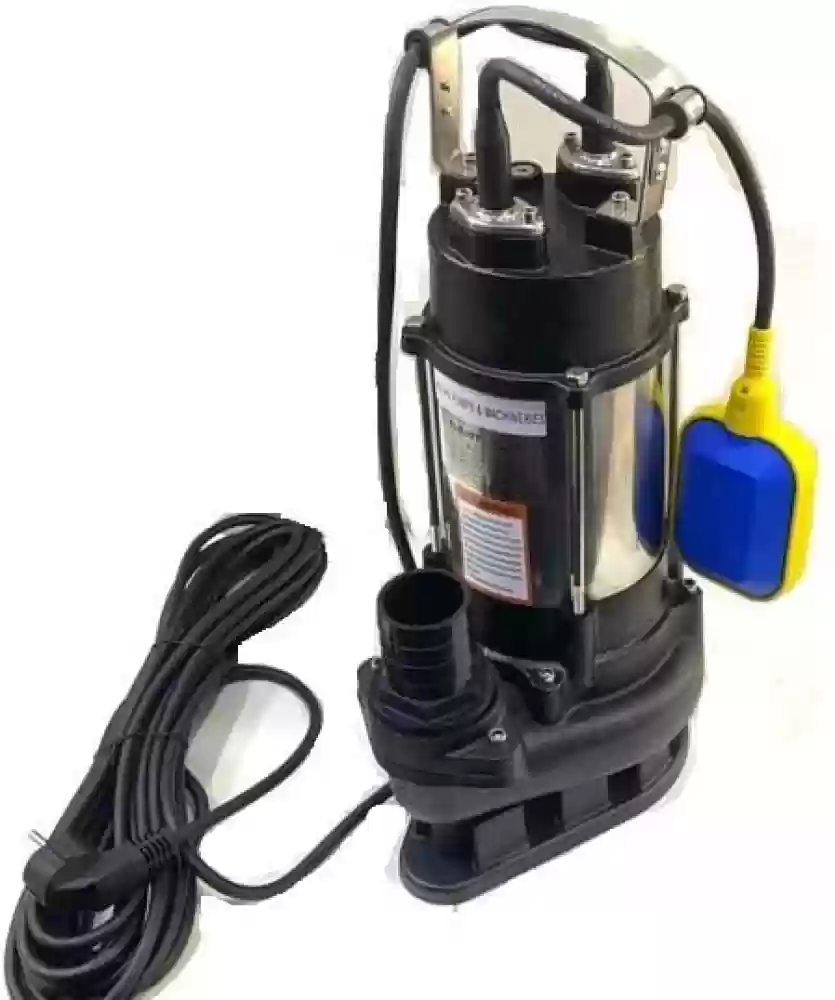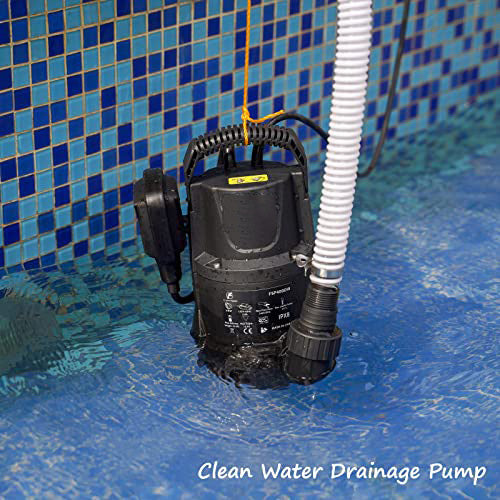Speedy Steps to Caring for Your Sump Pump
Speedy Steps to Caring for Your Sump Pump
Blog Article
We've stumbled upon this great article pertaining to Keep Your Sump Pump Clean, It'll Keep You Dry below on the web and thought it made perfect sense to discuss it with you in this article.

Sump pumps are critical parts in numerous homes, specifically in areas vulnerable to flooding or extreme dampness. They aid stop water damages by effectively getting rid of excess water from basements or crawl spaces. However, like any other home appliance, sump pumps need normal upkeep to guarantee they operate effectively when required one of the most. Cleansing your sump pump is an important part of its upkeep, and comprehending exactly how to do it appropriately can conserve you from expensive repairs and prospective catastrophes.
Introduction
Maintaining a clean sump pump is vital for its correct performance and durability. Disregarding this vital task can lead to obstructions, breakdowns, and eventually, water damage to your residential or commercial property. For that reason, learning how to clean up a sump pump is vital for property owners who count on these devices to maintain their basements dry and secured.
Recognizing the Sump Pump
Prior to diving right into the cleaning process, it's important to have a fundamental understanding of exactly how a sump pump works. Usually set up in a pit or basin below the basement floor, a sump pump consists of numerous crucial components, including a pump, a float button, and a discharge pipe. When water accumulates in the pit, the float switch turns on the pump, which then pumps the water out through the discharge pipeline, away from the structure's structure.
Indicators of a Dirty Sump Pump
Recognizing when your sump pump requires cleaning is important for stopping prospective malfunctions. Some usual indications that suggest an unclean sump pump consist of unusual noises throughout procedure, reduced water circulation, and visible particles in the pit. If you discover any of these symptoms, it's necessary to cleanse your sump pump promptly to prevent any type of additional issues.
Preparing for Cleaning
Prior to you begin cleansing your sump pump, it's vital to take some safety precautions. Start by turning off the power to the pump to stay clear of any kind of electric crashes. In addition, put on proper protective gear, such as handwear covers and goggles, to secure yourself from dust, particles, and prospective microorganisms.
Step-by-step Guide to Cleansing a Sump Pump
Shutting Off the Power
Begin by separating the power supply to the sump pump to avoid any kind of mishaps while cleaning.
Eliminating Particles and Dust
Utilize a pail or an inside story to get rid of any kind of visible debris, dust, or debris from the sump pit. Dispose of the particles properly to stop it from blocking the pump or the discharge pipeline.
Cleaning the Pump and Float Switch Over
As soon as the pit is clear of debris, very carefully eliminate the pump from the pit. Check the pump and the float switch for any kind of signs of damages or wear. Utilize a soft brush or towel to cleanse the surfaces and remove any type of built up crud.
Purging the System
After cleansing the pump and float button, purge the sump pit with clean water to eliminate any type of staying dirt or sediment. This will assist guarantee that the pump operates smoothly and successfully.
Looking For Appropriate Functioning
Prior to reinstalling the pump, execute a quick examination to ensure that the float button activates the pump correctly. Put some water into the sump pit and observe the pump's procedure. If every little thing is functioning properly, you can reassemble the pump and reconnect the power supply.
Upkeep Tips to Maintain Your Sump Pump Clean
In addition to routine cleaning, there are several maintenance ideas you can comply with to keep your sump pump in ideal problem:
Final thought
Cleansing your sump pump is a vital facet of its maintenance and ensures that it runs effectively when you need it the most. By adhering to the steps described in this overview and incorporating regular maintenance into your routine, you can prolong the life-span of your sump pump and safeguard your home from water damage.
6 STEPS ON HOW TO CLEAN A SUMP PUMP PROPERLY
UNDERSTANDING SUMP PUMPS
Your sump pump plays a crucial role in protecting your home by managing and removing excess water. It primarily functions as a “shield”, guarding your basement against the damaging effects of water accumulation. The pump is housed in a sump pit in the lowest part of your basement, and its job is to pump out any water that collects there.
During heavy rainfalls or when snow melts rapidly, water can infiltrate your basement, posing potential risks like flooding, structural damage, and harmful mold growth. Here, the sump pump springs into action, pumping out the intruding water and directing it away from your home.
SAFETY FIRST
Before cleaning, remember to prioritize safety. Disconnect the sump pump from the power source to prevent any accidental electric shocks. Also, wear sturdy gloves to protect your hands from any sharp or dirty components within the pump.
REMOVE THE SUMP PUMP
After ensuring your safety, the next step is to remove the sump pump from its pit. Doing this might require careful maneuvering as you don’t want to damage any pump components. Once removed, clean the sump pit to remove any accumulated debris or sludge.
INSPECT THE PUMP
Inspect the pump for any visible signs of wear or damage. Check the power cord, float switch, and impeller housing. If any components look worn out or damaged, consider replacing them to ensure optimal performance.
CLEAN THE PUMP
Thoroughly clean the pump with warm, soapy water. Make sure to rid it of any dirt, gravel, or other debris that might impede its performance. You can use a toothbrush to clean the small, hard-to-reach parts of the pump.
REINSTALL THE SUMP PUMP
Reinstall the pump into the sump pit Make sure it’s positioned correctly to remove the water effectively Once it’s back in place, reconnect it to the power source TEST THE PUMP
Finally, pour some water into the pit to ensure the pump works correctly. It should start automatically and begin pumping out the water; if it doesn’t, check the power source and the positioning of the pump.
Remember, while cleaning your sump pump is an essential part of home maintenance, hiring a professional plumber for a thorough inspection and cleaning at least once a year is also important. This will ensure that your pump is in optimal condition, ready to protect your home from potential water damage.
BEST PRACTICES FOR CLEANING SUMP PUMP DISCHARGE PIPES
Regular Inspection: Regularly inspect your discharge pipes, especially during heavy rainfall or snowmelt periods. Look for any signs of blockage or damage. Early detection of problems can prevent serious issues down the line. Periodic Cleaning: Over time, sediment and debris can accumulate in the discharge pipes, impeding the flow of water. Regular cleaning helps keep the pipes clear and functioning efficiently. You can use a high-pressure water jet to effectively clean the pipes. Insulation During Winter: In colder climates, discharge pipes can freeze, blocking the outflow of water. Protect your discharge pipes from freezing temperatures by insulating them with foam pipe insulation. This will ensure the sump pump can continue to discharge water even in freezing conditions. Proper Positioning: The discharge pipe should be positioned to direct water away from your home’s foundation. Improper positioning can lead to water seeping back into the basement. Ensure the pipe is long enough and angled correctly. Installation of a Check Valve: A check valve prevents water from flowing back into your sump pit after the pump has pushed it out. Installing a check valve helps maintain the efficiency of your sump pump and reduces the risk of flooding. Minimize Pipe Turns: Every curve or turn in the discharge pipe can decrease the efficiency of water flow. By minimizing turns and bends in your discharge pipe, you can increase the efficiency of your sump pump. https://www.fullspeedplumbing.com/how-to-clean-a-sump-pump-properly9999/

I was brought to that report on from someone on a different web blog. So long as you enjoyed our blog posting kindly do not forget to pass it around. We appreciate your readership.
Book Instantly Report this page